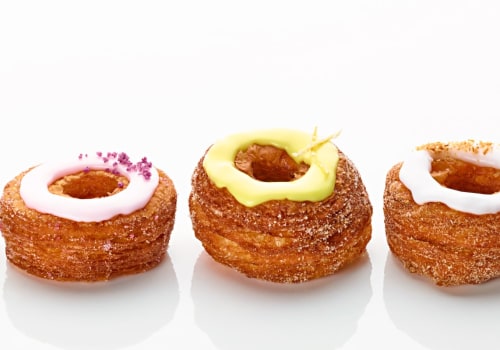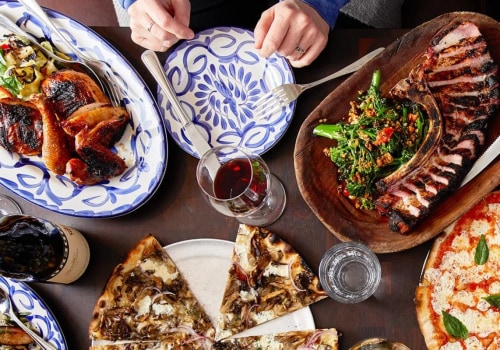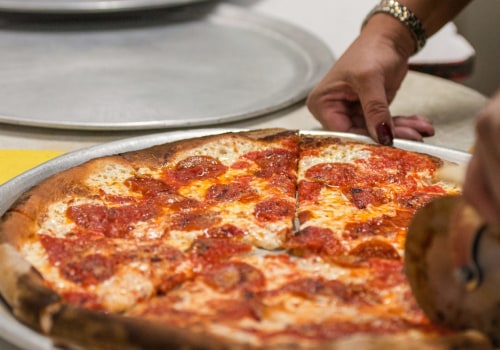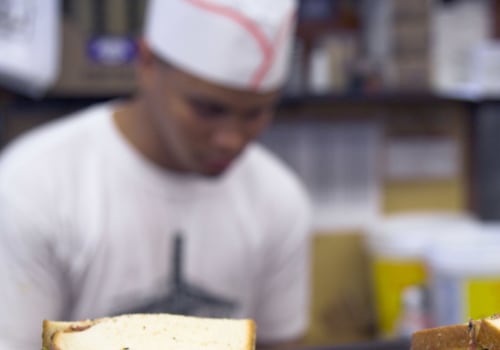Bagels and smoked salmon are the best dish to melt. Both had a long culinary history before joining together in the new world. Bagels arrived in the Lower Side East with the immigration of Polish Jews. Smoked salmon is a little more complicated, a mix of the Scandinavian tradition of saltwater salmon and Native American smoking and drying techniques.
The sandwich also includes some American cream cheese and sometimes also Italian onions and capers. The combination can be found at every bagel store in town, but Russ & Daughters is a piece of living history. Opened in 1914, the iconic “appetizing” store specializes in the Jewish tradition of serving foods combined with bagels. Unlike delicatessen stores that serve meat, the store focuses on dairy products (cream cheese) and expertly cured fish, such as caviar, sturgeon and salmon.
Trash is for eating in Rochester, where residents go crazy over the strange trash can. The story goes that a long time ago, a university student asked restaurateur Nick Tahou for a meal with “all the garbage”. Tahou agreed and created a combined dish with two hamburgers and a choice of two side dishes: homemade French fries, pasta salad and beans dipped in tomato sauce and hot sauce. Everything is mixed before eating, with rolls or white bread as a side dish.
Now, the name Garbage Plate is a registered trademark, but similarly named versions are served all over the city with a variety of proteins, such as sausage and eggs. Nick Tahou Hots is still the ideal place to learn about Rochester's strange history and enjoy an ideal meal late into the night. Cheesecake was part of the global culinary canon long before the imposing metropolis of New York City claimed that soft cheesecakes date back to ancient Greece. However, an American created the breakthrough that would become New York Cheesecake.
In an attempt to reproduce Neufchatel's French cheese, a man named William Lawrence of Chester, New York, stumbled upon an even richer and creamier result without ripening. That creamy cheese became the basis of the simple New York cheesecake (along with cream, eggs and sugar), which grew in popularity in the early 20th century. The most venerable version came out of Junior's kitchen in downtown Brooklyn in 1950, and resulted in a dense, smooth, almost spicy dessert that still attracts fans from all over the region and around the world. Much of the cuisine associated with New York comes from its large community of Italian-Americans and their descendants.
Much of New York's Italian food has become popular all over the world, especially New York-style pizza. We'll assume that most people have heard, if not eaten, pizza, since you can find it in most major cities around the world. Our Greenwich Village food tour stops at Bleecker Street Pizza, where you can sample the Nonna Maria portion for yourself. Alternatively, if you want to visit at least half a dozen of the city's excellent pizzerias, you can take the Secret Food Tours New York Pizza Tour tour.
While most Americans are familiar with bagels, foreign travelers may not be, so here's a brief explanation. Bagels are about the size of the palm of your hand. They are usually eaten for breakfast with butter or cream cheese. Bagels are now a staple of the New Yorkers' diet, and you can find bagels all over New York City.
Cheesecake is believed to have originated in ancient Greece. The Romans conquered the Greeks and spread the concept of cheesecake in parts of their empire. Millennia later, cheesecake came to the United States through immigrants from Europe. New York-style cheesecake differs from traditional cheesecakes in that it includes heavy cream or sour cream.
It is both silky and dense and can be quite sweet. There is nothing like it in the world. To get the quintessential New York-style cheesecake, you should eat a serving of Juniors. For the person-sized cheesecake, try an individual mini cheesecake from Eileen's Special Cheesecake at 17 Cleveland Place in NoLita.
Another type of cheesecake to try in New York is the “Italian style” cheesecake, made with ricotta cheese. Pastrami are cured cuts of meat (similar to corned beef or brisket). The origins of pastrami date back to Romania. Nowadays, the Lower East Side is where you can find the best pastrami sandwich in New York, at Katz's Delicatessen.
Katz's pastrami sandwiches on rye bread are big enough for two people to share. Sausages are another food that existed long before their arrival in the United States. UU. At the 1893 World's Fair, we sold thousands of sausages, and after that, sausage became a staple food at baseball games across the United States.
Now sausages are as American as possible. Some locals refer to sausages in a cart as “dirty water sausages”. Don't let the name discourage you. With mustard, sauerkraut, green condiment and spicy onion on top, these sausages are delicious.
Falafel is a chickpea batter made with soft herbs and spices and fried in a ball slightly smaller than a golf ball. Falafel is usually eaten on pita bread with a garnish of lettuce and tomato and tahini (sesame paste). Falafel sandwiches or even falafel balls alone are a quick and cheap snack. Although there are food carts that sell falafel at lunchtime, the best thing is at Mamoun's, on MacDougal Street in Greenwich Village.
At that time, the donuts had no holes. It wasn't until centuries later that donuts with a hole in the middle began to appear. The utility hot dog first appeared on the streets of New York City in the 1860s, sold by German immigrants, under the name of “sausage dog sausages”. AmsterdamBerlinBostonCharlestonChicagoDubaiLisbonLondonMiaminashvilleNew YorkNew OrleansParisPhiladelphiaPraguaRomeSan FranciscoWashington DC.
According to the Big Apple tradition, pastrami first appeared in New York City at the end of the 19th century, when a Lithuanian named Sussman Volk served it in a restaurant. New York-style pizza evolved from Neapolitan pizza, which was brought here by immigrants from southern Italy starting in the second half of the 19th century. Coming from Changzhou, in southern China (but closely associated with Shanghai), the xiao long bao became popular in New York at the beginning of the millennium thanks to Joe's Shanghai restaurant in Chinatown. In any case, cheesecake, which consists of chunks of cream cheese with egg yolk on a cookie dough, is firmly planted in the culinary domain of New York City.
Buffalo wings, the favorite food of sports fans, are named after the city of their origins. Alita may be Buffalo's most famous and export dish, but it's not the only culinary specialty that comes from the City of Good Neighbors. Chinese-Latin cuisine in New York is mainly associated with the immigration of Cubans of Chinese origin after the Cuban Revolution. When German immigrants began selling sausages on street corners in the mid-19th century, New York City and sausages became forgiveness, an inextricably linked play on words.
Amy's Bread, at Chelsea Market in New York City, offers an excellent interpretation with a fresh and spongy cake-like base greased with an airy chocolate and vanilla frosting. In 1872, an American dairy farmer William Lawrence, from the state of New York, accidentally created cream cheese, similar to French Neufchâtel cheese. What no one knew at the time was that this Romanian technique of curing meat would become a New York City staple. .
.




Leave a Comment